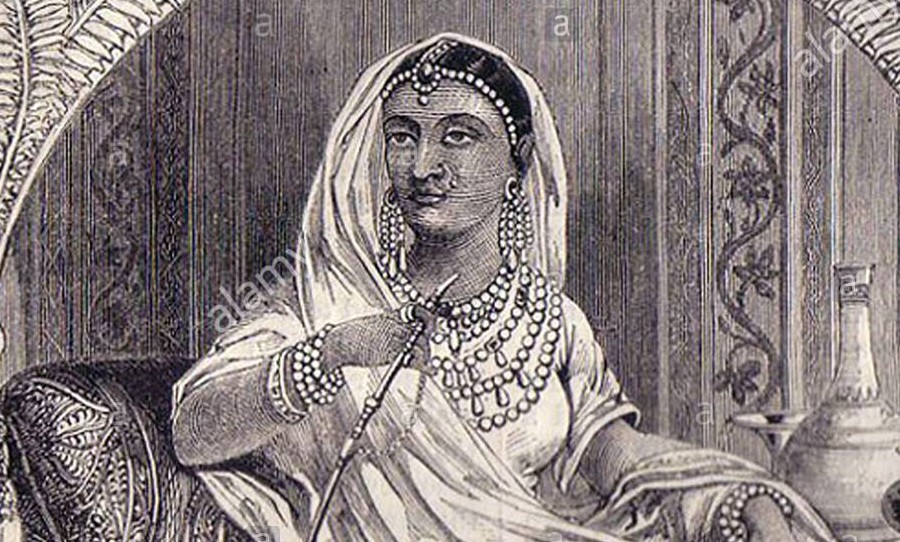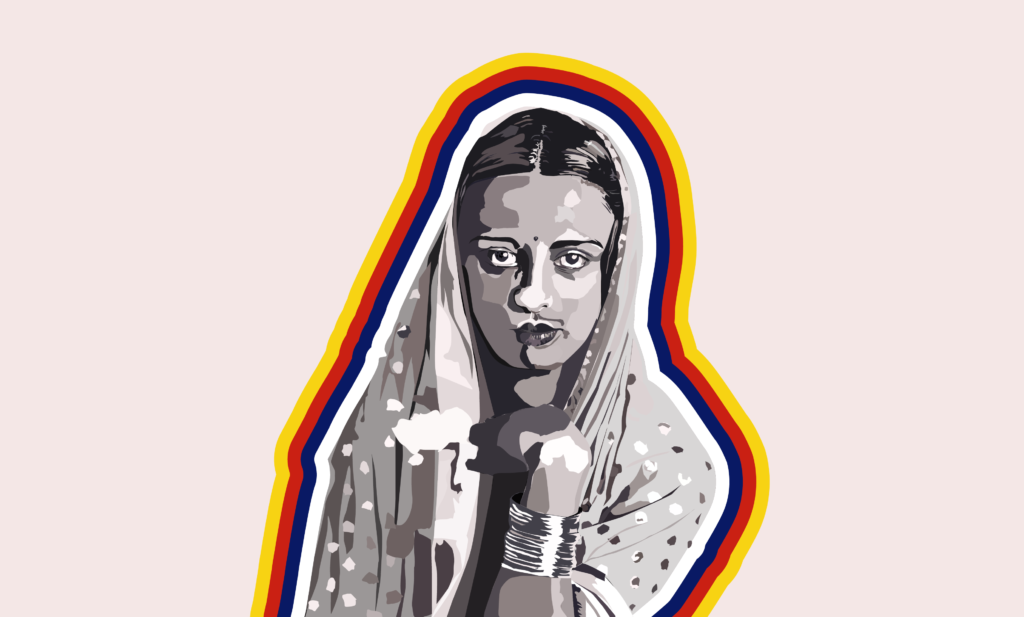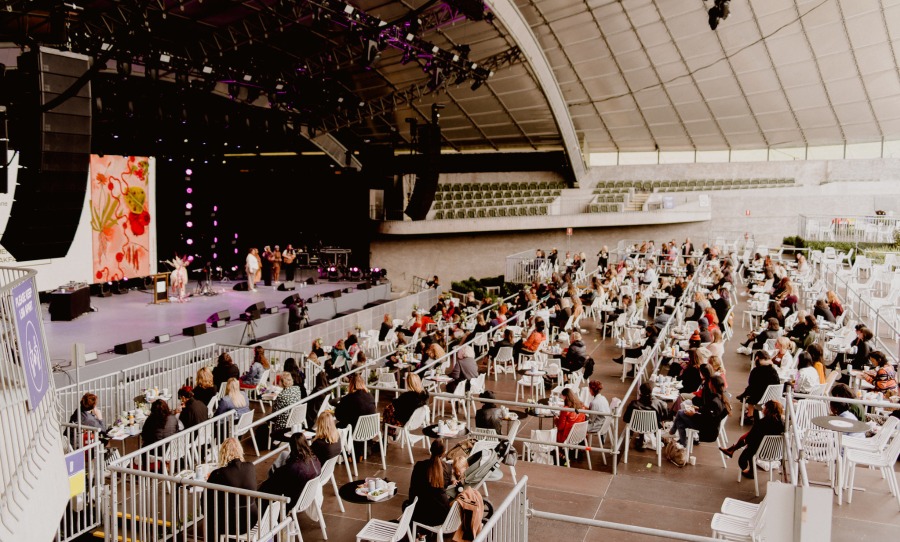In honour of International Women’s Day, we’re celebrating four South-Asian women who broke down barriers and revolutionised history.
Diasporic identities are difficult to define. Often, we find ourselves oscillating between each end of the hyphen, trying to bridge the distance between history, identity, and culture. As a South-Asian woman who’s grown up in Australia, I’ve struggled with the exact feeling.
Coming to terms with womanhood in the expanding scope of cultural history and an increasingly-hostile immigration climate is an incredibly confusing, turbulent process. Lately, I’ve found myself reaching back to the stories of women who overcame personal, social, and political barriers to soar beyond the status-quo, finding solace in not just our shared history, but in the future of opportunity that their journeys have given me.

In honour of International Women’s Day, this is a homage to four of the many trailblazers who carved a space for modern South-Asian women around the globe.
Amrita Sher-Gil
Often known as a pioneer of modern Indian art, Amrita Sher-Gil was a Hungarian-Indian artist who painted portraits of her friends, family, lovers, and herself. She was a groundbreaking artist of her time, who subverted the 1930s norm of painting obedient, subservient women and chose to translate the very-real complexities of female loneliness, confusion, and identity.
“[Sher-Gil] realized [her] artistic mission [after returning and reconnecting with India in 1935]: to interpret the life of Indians and particularly of the poor Indians pictorially, to paint those silent images of infinite submission and patience, to depict their angular brown bodies,” wrote one of Sher-Gil’s biographers, Yashodhara Dalmia.
View this post on Instagram
Beyond her support for the emerging Indian freedom struggle (a struggle that, decades later, would culminate in the Partition of India), Sher-Gil’s exploration of complex Indian identity also delved into bisexuality, establishing her as a queer, feminist icon in Indian history.
Benazir Bhutto
Benazir Bhutto was the first female Prime Minister of Pakistan who, was not only the first Muslim woman to hold a country’s highest office, but in 1988, was the youngest Prime Minister in the world. Born into a Pakistani political dynasty, Benazir Bhutto carved out space for Muslim women in politics that was unprecedented in the late 20th century.
As a woman ruling a nation founded on conservative Islamic values, Bhutto faced an immense amount of pressure to shake, without crippling, the structures of power that underpinned her administration. And she didn’t fail. Her charm and wit, unmatched political intellect and unapologetic attitude towards being both a woman and a leader (she had a child while in office!) led to her status as one of the most popular Pakistani politicians, arguably second only to Muhammad Ali Jinnah: the founder of Pakistan.
Remembering Shaheed Benazir Bhutto, First ever Lady Prime Minister of Pakistan & Islamic World.#WomensDay #IWD2021
@asmashirazi@BakhtawarBZ @AseefaBZ pic.twitter.com/A4QOLOyIeD— Bashir Nichari (@bashirnichari1) March 8, 2021
Despite the threat of corruption allegations, Bhutto’s presence in the male-dominated arena of Pakistan, and the world’s politics, have left an irrevocable, long-lasting impression. Her legacy of strength has empowered an entire generation of women to enter the democratic political landscape. Even her assassination spoke to a broader, cultural divide in the gendered playing field of politics and raised awareness of the personal struggle of women in public service.
Sarojini Naidu
A fierce proponent of the Indian Independence movement, Sarojini Naidu was an Indian poet who advocated for women’s civil rights and anti-imperialism. Taking a keen interest in the movement for independence from India, she became the first female president of the Indian National Congress and went on to become the first female Governor of a state (Uttar Pradesh).
Named the “Nightingale of India” by Mahatma Gandhi, Naidu had one of the most prolific literary careers in the nation’s history. Beyond her poetry, Naidu also wrote essays and articles about the emancipation of women and her anti-British political views. Feminism and freedom were at the core of her ideology, having shaped the Women’s Indian Association in 1917, which sought equal rights like the right to vote and represent. Naidu was also involved in the creation of Stri Dharma, a magazine that presented international news from a feminist perspective.
Paying my humble tribute to the prominent woman of Indian history, the “Nightingale of India”, the first female governor, famous poet, social activist and the pride of India, Sarojini Naidu ji.
“भारत कोकिला, सरोजिनी नायडू !” pic.twitter.com/itolSKyud7— Hope Humanity (@TheHopeHumanity) March 2, 2021
Sarojini Naidu’s status as the face of Indian feminism is firmly set in history – with the country annually celebrating National Women’s Day on the anniversary of her birth.
Laxmibai, Rani of Jhansi
Laxmibai, Rani of Jhansi – which translates to “Queen of Jhansi” – was the woman who spearheaded the Indian rebellion of 1857, taking the British Empire by surprise. Known as one of the nation’s fiercest freedom fighters, Laxmibai (born Manikarnika Tambe) grew up in Varanasi and her upbringing was unusual for the 1800s.
Raised equal to any son, she was proficient in archery, fencing, and horse-riding, as well as being literate: a feat that was unheard of in her time. A model of female heroism, her reign occurred during the annexation of her realm by the British, who were attempting to broaden their expansion in India.
It’s March! My favorite month and the month I inudate y’all with – #WomensHistoryMonth Today : Lakshmibai, the Rani of Jhansi, Indian queen and one of the leading figures of the Indian Rebellion of 1857 and the symbol of resistance to the British Raj for Indian nationalists. pic.twitter.com/WKR3GAb3LW
— Kell-Fever SZN – 🌷🌺🍀 (@ilovetalib) March 1, 2021
Laxmibai was a feminist icon, before feminism even got its name. Her refusal to abide by the hierarchy of the caste system and her rejection of the “purdah” (literal translation: veil/curtain) – a system where women are required to conceal their faces from public view by a veil – was emblematic of her staunch dismissal of a sexist system of oppression. Decades after her death in battle, Laxmibai became the symbol of resistance for freedom fighters in India’s 1947 battle for independence.
There are countless more narratives of South-Asian women that are hidden in history; stories of the strength, success, and fortitude of brown womanhood that raise the question – to know where we’re going, shouldn’t we know where we come from?



